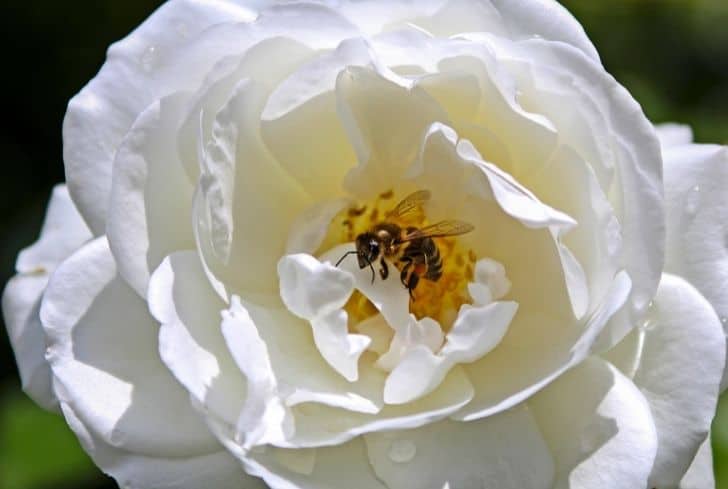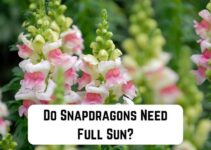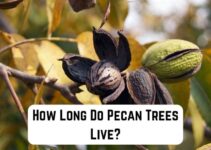If you have a rose garden or are planning to build one, you have probably wondered whether bees like roses. In this article, we will answer that question and shed light on the types of roses that bees love most. Additionally, we will also share our insights on the other insects and birds that are attracted by roses.
So, if you want to find out if roses attract bees, here’s everything you need to know.
Do Roses Attract Bees?
Yes. Bees enjoy their time around roses, especially when the flowers are brimming with nectar. However, as with everything else, bees are attracted to some specific variants of roses like wild roses and certain types of hybrid rose bushes.
Whether bees would be attracted to your rose bush depends on the type, structure, and color of the rose. Honeybees for instance only prefer single stem roses in yellow. They are not attracted to red roses because they can’t visualize the color.
Most bees come around the flower, attracted by its beautiful scent or pollen. When they finally pollinate a rose in your dense bush, that specific bush will develop a set of rosehips, which are the tiny seed coverings of these flowers.
Gardeners and medicine enthusiasts dry the rosehips and add them to tea and other beverages for their rosy essence.
What Flower do Bees Like the Most?
Even though bees like almost all types of flowers, they are particularly fond of the ones that come with an intoxicating fragrance. Other preferred factors include some specific color ranges and the shape of the flower.
Most bees tend to love flowers with a conical shape. This way, they can also conveniently capture the nectar from the flower. They also tend to like roses that appear individually as opposed to the iconic double stems.
Usually, bees will fry from rose to rose in an attempt to suck in the nectar. When they finally land on the roses, their body hair taps in some excess pollen. Now, when they move to another flower to suck in the nectar, the previously collected pollen is added to the new flower, thereby paving the way for pollination.
With that said, most honeybees will only pollinate roses that come with smaller and loose petals. Because tight petals can create hindrance while sucking the nectar, bees tend to avoid these variants.
Why do Roses Attract Pollinators?
When bees roam near flowers, it’s primarily because they want to capture the nectar. As opposed to honeybees, bumblebees buzz really loud as they access the anthers of the flower and move their thorax against them to transfer all the pollen it had collected earlier.
Bees also tend to love close blossoms as it ends up saving their energy. If the flowers are placed in proximity, they can conveniently move from flower to flower, pollinating them more conveniently.
Because roses tend to grow in bushes with multiple flowers growing in a single bush, they are a much-coveted option for bees.
Thanks to these clusters of flowers, they won’t have to compete with their peers to get maximum pollen content. Everyone gets enough and with the spacious bush, they will also have ample room to move around.
Which Roses Attract Bees?
Even though bees love roses, they aren’t attracted by all species of roses. In this section, we will learn more about those roses that are widely popular among the bee population.
1. Wild Roses
As discussed already, wild roses are a top favorite among bees. Among all variants, the ones that stand out are Kiftsgate and Grandiflora. Both the variants tap in a vast bee population and they also assume a lofty height of around 30 feet.
Most wild roses produce scores of flowers, and they are, therefore, widely loved and frequented by groups of neighborhood bees.
2. Hybrids
If you thought wild roses were the only variant of roses that bees love, you’ve never been more wrong! Bees are also known to love some hybrid variants of roses including (but not limited to)
- Morning Mist
- Kew Gardens
- The Lady’s Blush
As with the wild roses, bees enjoy their time around hybrids because the flowers are in proximity to each other. This way, they can get their desired nectar, and switch from one flower to the next, without having to exhaust plenty of energy.
3. Bright colored variants
Roses, regardless of their species, truly stand ahead of others, even in the prettiest of gardens. Bees notice this beauty and come attracted to the flowers. Usually, bees love to frequent roses that have a pinkish or yellowish hue.
Some bees cannot identify red, and they thus avoid it. So, if you want bees to find your rose bushes more conveniently, try planting a bunch of these flowers in their preferred color range.
Do Roses Attract Butterflies?
Yes! Most butterflies are attracted by the beautiful fragrance and appearance of rose clusters. So, in case you want to add flowers that will certainly attract butterflies, roses might be your best bet!
When it comes to the pollination process, butterflies operate the same way as bees. They first choose a flower that is easy to detect and then land on it. Next, they attempt to suck in the nectar from your rose by leveraging their proboscis. For the uninitiated, this is an elongated appendage that the insects come with.
Unlike bees that feature hair on their bodies which later traps in the pollen, butterflies tend to garner pollen using their wings. Because mature butterflies have wide wings, the pollens can effectively stick to a spacious area.
Butterflies deposit pollen the same way as bees. They move from one flower to the next and drop the pollen while attempting to suck nectar from the said flower.
Which Roses Attract Butterflies?
As with bees, butterflies prefer roses that appear in small clusters. This provides more access without involving much exhaustion. With plenty of roses in a single bush, butterflies also get numerous options before they finally settle on their favorite.
Usually, butterflies love almost all types of roses as long as they are bright and beautiful. So, you can practically plant any bright rose to attract these pollinators. As with bees, these insects also prefer roses that come with an enticing smell.
So, if your rose garden comprises multiple fragrant rose bushes, butterflies will certainly spend some time pollinating your flowers. The key is to keep a variety. This way, the insects are practically spoilt for choice and will love frequenting your rose blooms.
Do Roses Attract Hummingbirds?
Yes! Hummingbirds love beautiful rose blooms, especially the orange and red ones. Most Hummingbirds frequent roses in a bid to extract nectar. However, the birds will still visit your rose bush even if it doesn’t contain nectar. Why? Because sometimes they tend to use roses as a makeshift perch.
These birds also visit roses to prey on other pollinators. In some cases, they are successful. But how do they land on the flower and how does their pollination process work? Is the process the same as bees and butterflies? If not, how is it any different?
If you ever had the chance to observe a hummingbird from proximity, you would realize that their wings are blurry. This typically happens because the average North American Hummingbird tends to beat its wings at least 53 times in every second.
Because of this action, plenty of vibration is created around the bird. Over time, this loosens out the pollen from the flowers in proximity. This loose pollen now freely moves around, and, in some situations, it also lands on nearby flowers.
While this entire pollination tactic may not be as direct as insects, it is still quite effective.
Which Roses Attract Hummingbirds?
When it comes to hummingbirds, they do not have any specific preference. In the majority of the cases, they tend to love all types of rose bushes, as long as the flower is loose and easily accessible.
However, they also tend to like some specific rose variants as they tend to visualize those colors better. These include the bright orange and red roses. In some cases, they may even spot bright yellow roses.
Regardless, if you have a rose bush in your garden, you can expect hummingbirds. If they don’t come for pollination, they will at least frequent the plant and its flowers to trap insects. Either way, keeping a rose garden is an excellent way to invite pollinators to your garden.
Now that you know which species of roses are preferred by the bee population, you can easily pot those specific variants in your garden. This way, you will encourage bees and other insects to pollinate your flowers, which in turn, will help sustain their population.
We have made reasonable progress in the realms of farming and gardening, and now multiple automated devices are being used instead of insects for pollination. However, we cannot overlook the importance of bees in pollinating roses and other flowers.
When you plant roses to attract bees and hummingbirds, your plants too tend to thrive better, and your flowers are as full and as beautiful as ever!






